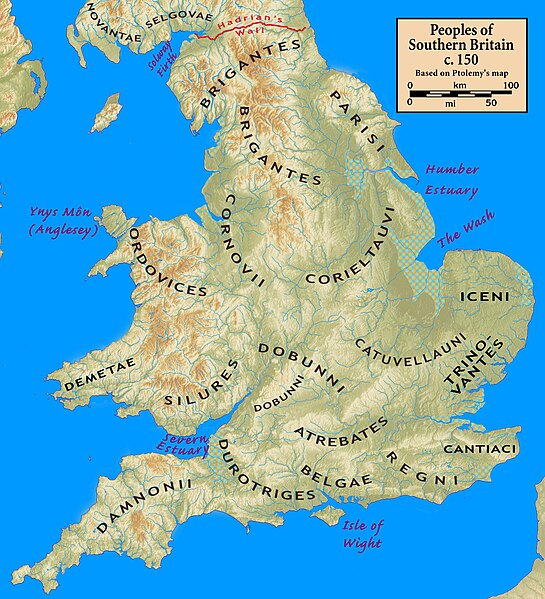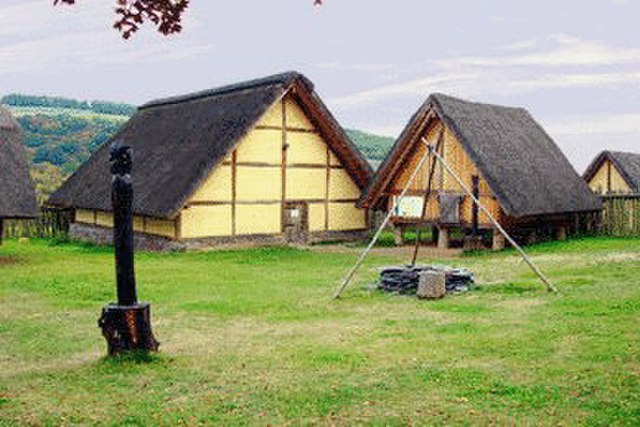The Britons, also known as Celtic Britons or Ancient Britons, were an indigenous Celtic people who inhabited Great Britain from at least the British Iron Age until the High Middle Ages, at which point they diverged into the Welsh, Cornish, and Bretons. They spoke Common Brittonic, the ancestor of the modern Brittonic languages.
Celtic warrior recreation, including carnyx and a replica of the Waterloo Helmet
Recreated Celtic village at St Fagans National Museum of History, Wales
The Staffordshire Moorlands Pan
Tribal groups in southern Britain c.150 AD
The Celts or Celtic peoples were a collection of Indo-European peoples in Europe and Anatolia, identified by their use of Celtic languages and other cultural similarities. Major Celtic groups included the Gauls; the Celtiberians and Gallaeci of Iberia; the Britons, Picts, and Gaels of Britain and Ireland; the Boii; and the Galatians. The relation between ethnicity, language and culture in the Celtic world is unclear and debated; for example over the ways in which the Iron Age people of Britain and Ireland should be called Celts. In current scholarship, 'Celt' primarily refers to 'speakers of Celtic languages' rather than to a single ethnic group.
The Dying Gaul, an ancient Roman statue
The La Tène–style ceremonial Agris Helmet, 350 BC, Angoulême city Museum in France
Reconstruction of the Hochdorf Chieftain's Grave, Stuttgart, Germany
Reconstruction of a late La Tène period settlement in Altburg near Bundenbach, Germany (first century BC)








